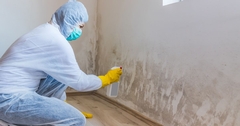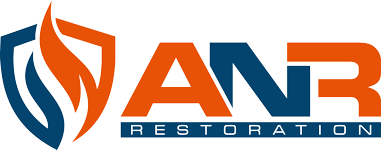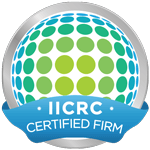
When a fire ravages a property, the aftermath can be devastating, leaving behind a trail of destruction and damage. While fire damage is often the most visible consequence, smoke damage can be equally pervasive and insidious. In this blog post, we'll delve into the key differences between fire damage and smoke damage, as well as explore effective restoration approaches to mitigate their effects and restore your property to its former glory.
1. Fire Damage
Fire damage refers to the destruction caused directly by flames. It can manifest in various forms, including charred structures, melted materials, and structural weakening. Fire damage is often localized to the areas directly affected by the flames, but it can spread rapidly if not contained promptly. Common signs of fire damage include burnt walls, ceilings, and flooring, as well as the destruction of personal belongings and furnishings.
Restoration Approach
Restoring a property damaged by fire requires a comprehensive approach that addresses structural repairs, debris removal, and salvage efforts. Professional restoration technicians assess the extent of the fire damage and develop a tailored restoration plan to rebuild and repair affected areas. This may involve structural reinforcement, rebuilding damaged walls and roofs, and restoring salvageable belongings through cleaning and repair processes.
2. Smoke Damage
Smoke damage refers to the residue and odors left behind by smoke and soot particles during a fire. Even in areas untouched by flames, smoke can infiltrate porous surfaces, leaving behind stubborn stains, discoloration, and lingering odors. Smoke damage can affect walls, ceilings, furniture, clothing, and HVAC systems, posing health risks and compromising indoor air quality.
Restoration Approach
Addressing smoke damage requires specialized cleaning techniques and equipment to effectively remove soot particles and neutralize odors. Restoration professionals use HEPA vacuums, chemical cleaners, and ozone generators to clean and deodorize affected surfaces and air ducts. Additionally, thermal fogging and air scrubbing methods may be employed to eliminate smoke odors and improve indoor air quality.
Key Differences
While fire damage and smoke damage are interconnected, they present distinct challenges and require tailored restoration approaches. Fire damage primarily affects structural integrity and physical infrastructure, necessitating extensive repairs and rebuilding efforts. In contrast, smoke damage permeates surfaces and air, requiring thorough cleaning and deodorization to eliminate soot residues and odors effectively.
Prevention and Preparedness
To minimize the impact of fire and smoke damage on your property, it's essential to prioritize prevention and preparedness measures. Install smoke detectors and fire alarms throughout your home or business and ensure they are regularly tested and maintained. Develop and practice a fire evacuation plan with your family or employees, including designated escape routes and meeting points. Additionally, invest in fire-resistant building materials and consider installing sprinkler systems and fire suppression devices for added protection.
Fire damage and smoke damage present unique challenges that require prompt and professional intervention to mitigate their effects and restore affected properties. By understanding the key differences between fire damage and smoke damage and implementing proactive prevention measures, you can safeguard your property and minimize the risk of devastation in the event of a fire. Remember, when it comes to fire and smoke damage restoration, swift action and expert assistance are essential for achieving optimal outcomes and returning your property to a safe and habitable condition.


